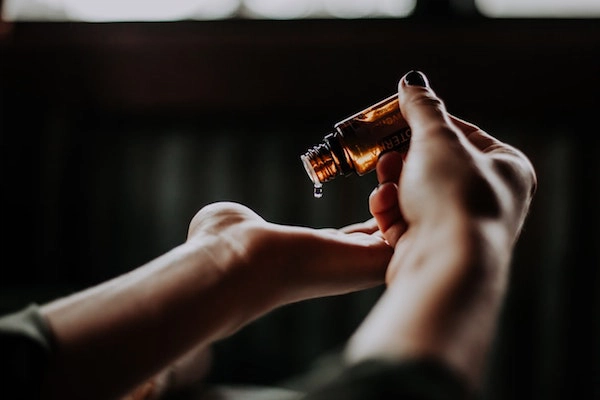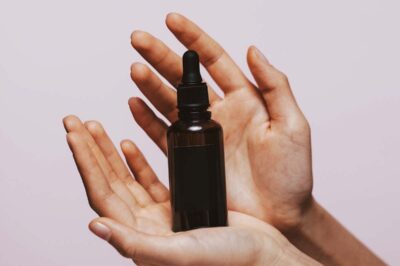Table of Contents[Hide][Show]
Vitamin C is advertised on everything from skin care products (many of them, in fact) to dietary supplements, so by now you’ve probably figured out that it’s good for you—but do you have a full understanding of why?
While vitamin C is considered a powerhouse ingredient, in order to get the biggest benefit topically and internally, it’s important to comprehend all of the different benefits, the different forms of vitamin C, the application process, and how to choose the highest quality products incorporating the ingredient so you’re not wasting your time or money.
Ahead, everything you need to know—and then some.
5 Summer Beauty Guide: 9 Tips from a Skin Professional to Keep You Glowing this Season
Benefits of topical vitamin C for skin
Vitamin C is a potent, naturally occurring antioxidant that is used topically to treat and prevent a variety of skin conditions to include:
- Reducing the appearance of aging
- Creating the appearance of a brighter, more even complexion
- Lessens the appearance of temporary redness
- Promoting an even skin tone
- Protecting skin from environmental stressors
- Reducing the appearance of dullness
- Promoting ageless beauty
- Minimizing the appearance of expression lines and wrinkles
- Brightening and lightening your look

Different types of topical vitamin C
When looking at an ingredient label, you’ll see many forms of topical vitamin C. This can definitely be a bit confusing, but the main differences have to do with stability. Referring to whether or not the form can infiltrate the stratum corneum and any potential side effects. Research suggests that vitamin C derivatives may not be able to penetrate the skin, while some may be added to a product at such a low level that the user won’t see any results. Here are some of the key players:
L-ascorbic acid
This form is touted as the most potent and pure because it’s the only form that can be completely absorbed—so much to the point that it can’t be washed off and will linger in the skin for up to an impressive 72 hours.
The bad news is that it’s also the least stable form of C because it oxidizes easily. Another downside is that L-ascorbic acid tends to cause the most skin irritation and can leave a temporary yellowish tinge on the skin.
Magnesium ascorbyl phosphate
This water-soluble form of C is great because it’s more stable than L-ascorbic acid while still having excellent penetration quality because it has a pH of 7. This one still has the potential to degrade and oxidize when exposed to light and air, just a little bit slower than other vitamin Cs.
Sodium ascorbyl palmitate
Moving on up, research indicates that SAP is more stable than other forms of C. It protects against environmental stressors after being converted into ascorbic acid within the skin. It is also a defense mechanism against Propionibacterium, an acne-causing bacteria.
Ascorbic acid polypeptide
This water-soluble C is extremely stable and converts into C when applied with minimal irritation.
Ascorbyl glucosamine
A mixture of vitamin C and an amino sugar known as glucosamine. It’s known for protecting against environmental stressors and clarifying and balancing the skin. The drawback is there’s not a lot of research to back up that it’s actually effective.
Ascorbyl glucoside
Aside from the fact that this vitamin C is mixed with glucose, the pros and cons of ascorbyl glucoside are the same as ascorbyl glucosamine.
Sodium ascorbyl palmitate
A hybrid of L-ascorbic acid and palmitic acid and despite the way it sounds, it’s actually non-acidic. It’s known for protecting against environmental stressors and revitalizing the appearance of mature skin—but only at a high concentration. Unfortunately, many skin care products don’t hit the mark.
Tetrahexyldecyl-ascorbate (THDA)
This is our number one pick, and the reason it’s featured as a key ingredient in our Concentrated Boosting Elixir, Brighten. THDA is an oil-soluble vitamin C that is extremely stable, while it can penetrate the dermis and epidermis due to its lipid properties. Its optimal pH (7) allows it to be one of the most non-irritating forms of vitamin C on the market. To top it off, the tetrahexyldecyl-ascorbate that we use is a Made Safe approved ingredient–bringing full circle alignment to providing effective skin care with clean ingredients. It is derived from glucose, a natural sugar obtained from non-genetically engineered vegetable starches.
Vitamin C from plants and fruits for skin
Of course, ingredients straight from nature (plants and fruits) that have high contents of vitamin C can provide similar benefits with naturally occurring phytonutrients.
Annmarie Skin Care prides itself on using ingredients high in C such as sea buckthorn berries, rosehip seed oil, and amla berries. Many processed vitamin C can be contaminated, contain fillers and toxic ingredients. So if you do opt for a processed C, do your research and trust your source so that you’re getting a clean one.
Which C to choose
While processed C is more stable (and potentially more effective in a shorter time period) than using ingredients high in vitamin C straight from nature, you should do your due diligence before committing to the perfect C for you. As aforementioned, many vitamin C can be produced with ingredients you really don’t want near your skin. So if you choose a processed C, choose a clean and safe one sourced from a natural derivative, like our Concentrated Boosting Elixir, Brighten.
Plant and fruit matter high in vitamin C, on the other hand, is an incredible choice if you want to opt for fruits and herbs. These also contain bioflavonoids, enzymes, and ascorbic acid—natural compounds that aid in a healthy complexion. You won’t see results instantaneously, but a few weeks for radiant and vibrant skin using high vitamin C ingredients, like our Citrus Stem Cell Serum is a win.
Read more about vitamin C serums here.

Applying topical vitamin C
We’ve talked about absorption a lot, so when it comes to applying topical vitamin C, you’re going to want to make sure you have clean skin. Many forms of C tend to be serums as they are more concentrated ingredient-wise than a moisturizer.
Always pat, not rub, a serum into the face so you don’t break down the ingredients. You’ll find natural C in products such as Annmarie’s face oils and serums.
Benefits of internal vitamin C
The use of internal vitamin C was discovered in the 1930s by Dr. Albert Szent-Györgyi as a cure for scurvy—a disease stemmed from malnutrition. You may have read about how sailors used to eat oranges when they were on long voyages at sea. That’s because when consumed, C aids the body in effectively using carbohydrates, protein, and fat.
While there are additional copious benefits that come from taking vitamin C in the modern-day world (treating the common cold, boosting the immune system, boosting mood, protecting against environmental stressors, and supporting a healthy heart), from a skin perspective, C is linked to reducing cortisol.
This pesky hormone is released during stressful times. This can lead to skin conditions (think acne, eczema, dullness), a decrease in muscle tissue, and an increase in visceral fat—typically around the midsection.
Taking internal vitamin C
While you can pop a supplement—typically around 1,000 milligrams per day—to reduce cortisol levels (be sure to consult your doctor before starting a new supplement), there are several natural sources of vitamin C. These include oranges, strawberries, cantaloupe, spinach, cabbage, papaya, bell peppers, green peas, broccoli, grapefruit, kiwi, tomatoes, and pineapple.
Now that it’s summer, it’s the perfect time to hit the farmers’ market and prepare vitamin C-rich meals all season long!
“C” the light
While Annmarie stands behind the efficiency of natural vitamin C (it’s how nature intended it to be!), it’s okay to experiment with a synthetic form—but just make sure to do your research first.
Read reviews, don’t be afraid to ask a salesperson specific questions regarding stability and added ingredients, and remember: If it sounds too good to be true, it’s probably a good idea to keep your money in your wallet.
5 Summer Beauty Guide: 9 Tips from a Skin Professional to Keep You Glowing this Season
Resources:
“Vitamin C in Dermatology”, NCBI, Indian Dermatology Online Journal, April-June 2013, https://www.ncbi.nlm.nih.gov/pmc/articles/PMC3673383/
“Application of l-Ascorbic Acid and its Derivatives (Sodium Ascorbyl Phosphate and Magnesium Ascorbyl Phosphate) in Topical Cosmetic Formulations: Stability Studies”, J. Chem. Soc. Pak., March 2013, https://www.jcsp.org.pk/PublishedVersion/d63b69db-eba1-4590-8d24-7eabca2f54a3Manuscript%20no%207%20Final%20Gally%20Proof%20of%209590%20_Slim%20SMAOUI_.pdf
“Vitamin C Versus Natural, Does It Make A Difference?”, Annmarie Skin Care, https://www.annmariegianni.com/synthetic-vitamin-c-versus-natural-does-it-make-a-difference/
“Albert Szent-Györgyi’s Discovery of Vitamin C”, ACS, May 11, 2002, https://www.acs.org/content/acs/en/education/whatischemistry/landmarks/szentgyorgyi.html
“Scientists Say Vitamin C May Alleviate The Body’s Response To Stress,” American Chemical Society, https://www.sciencedaily.com/releases/1999/08/990823072615.htm








The first SAP should be Sodium Ascorbyl Phosphate.
Thank you for the article. Super informative! But you have “Sodium ascorbyl palmitate” listed twice. Is one supposed to be “Sodium ascorbyl phosphate? And if so, which is which?!?